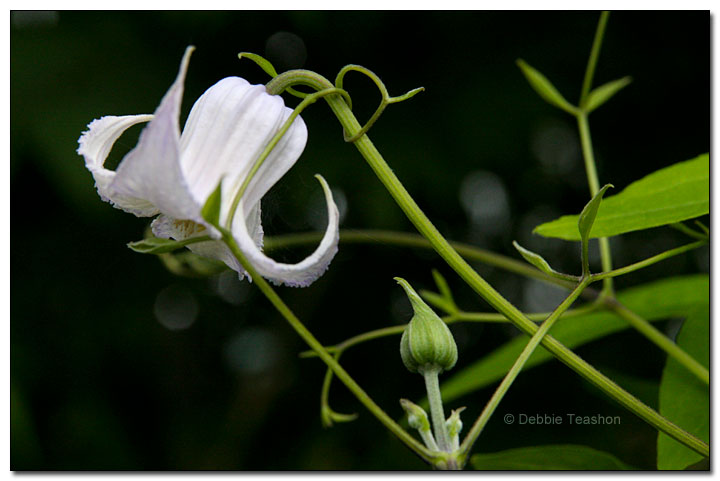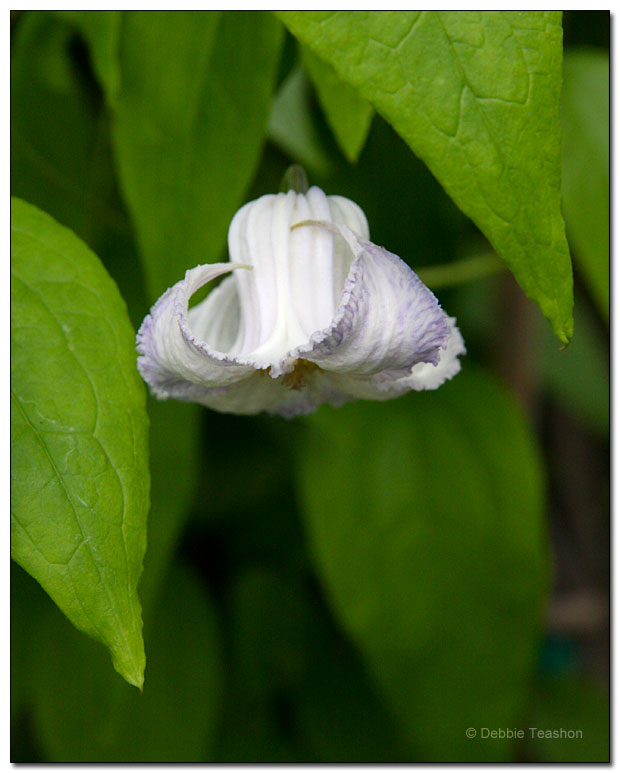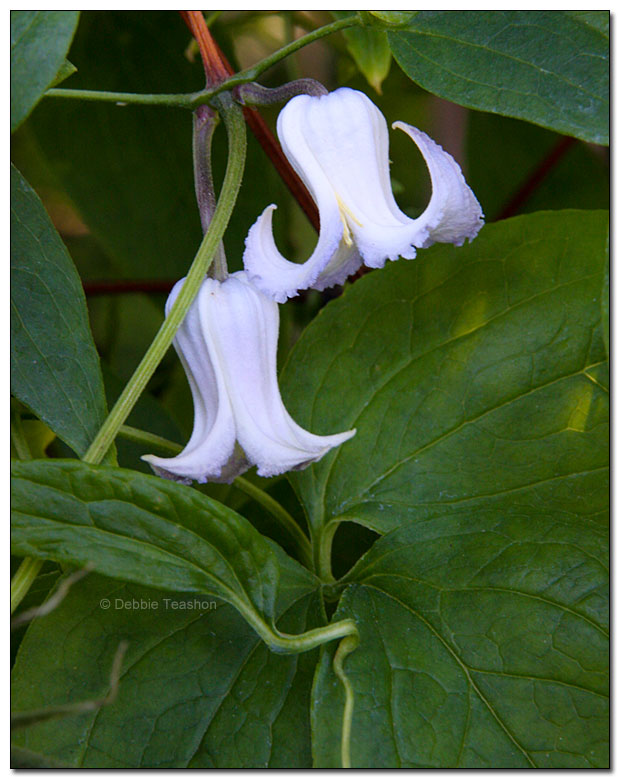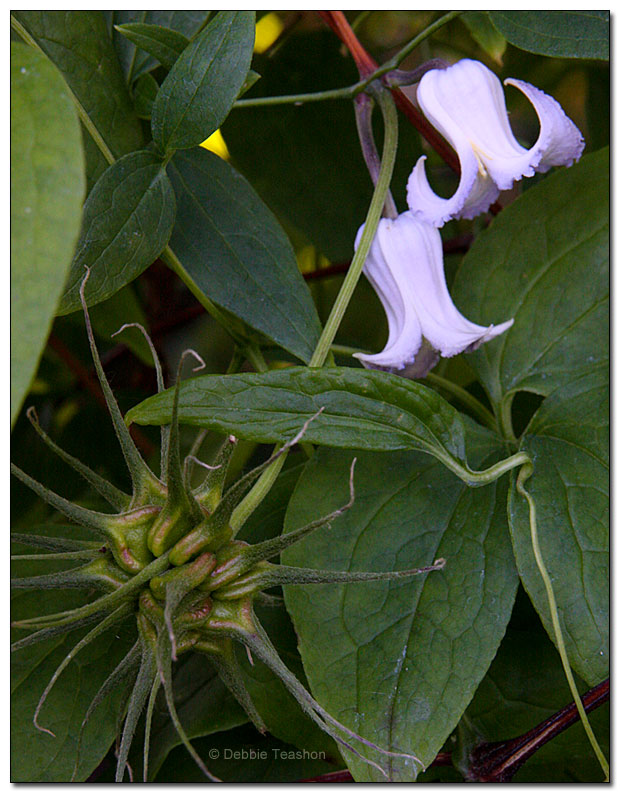Clematis crispa
CURLY CLEMATIS, MARSH CLEMATIS, BLUE JASMINE, SWAMP LEATHER FLOWER, LEATHER FLOWER
Family: Ranunculaceae
Pronounced: KLEM-uh-tiss KRISP-uh

Quick Jumps
Growing Guide
Rainy Side Notes
GROWING GUIDE

Origin:
Alabama, Arkansas, Florida, Georgia, Kentucky, Louisiana, Missouri, North Carolina, Oklahoma, South Carolina, Tennesse, Texas and Virginia.
Plant Group:
Vines.
Hardiness:
Sunset zones: A2, A3, 2-11, 14-24.
USDA zones: 5-11.
Heat zones: 9-6.
Mature size:
Height: 6-8 feet (2.5 m).
Width: 3 feet (1 m).
Flowering period:
Midsummer to autumn.
Flowering attributes:
Single, fragrant, nodding, bell-shaped flowers, with a white base and 4 reflexed sepals that have wavy margins of varying colors of violet, purple, pale lavender to pale blue, and sometimes two-toned, with yellow to pale green stamens.
Leaf attributes:
Each mid green leaf has serrated margins and is arranged as nine leaflets on a stem.
Light:
Full sun.
Soil:
Fertile, moist, humus rich, neutral to acidic soil.
Feeding:
Mulch well with composted manure or compost. Feed once a month with a complete organic fertilizer during the growing season.
Propagation Methods:
Recommendations* say the best plants come from seed.
Layer branches in late winter.
Basal and softwood cuttings in spring.
Division in spring.
Semi-ripe cuttings in early summer.
Pruning Methods:
In winter, prune the stems down to 6 inches.
Rainy Side Notes
I believe that Clematis crispa, with its scented flowers, should have been used more in early breeding work.
~Raymond J. Evison
The Delicate stems of this vine hold the utterly charming, bell-shaped, reflexed petals that have variable colors in the wild. You can train this vine to be a shrub, which helps protect its delicate stems. Notably, this vine is adaptable to various climates, with a long bloom time from summer to fall in colder climates and from late spring into fall in mild winter climates.
This southern native charmer passed its sweet tangerine-like fragrance onto the vine's progeny, C. 'Betty Corning'. Two of its common names—marsh clematis and swamp leather flower—testify to where it grows in its native habitats; it is the only clematis that can thrive in wet soil, a unique characteristic.
Its epithet, crispa comes from the sepal's wavy or crisped margin. In Illinois where they commonly call it blue jasmine, it's an endangered species, a concerning status for its conservation. In Kentucky, where the vine is widely called blue jasmine leather flower, it's a threatened species, further highlighting the need for conservation efforts.



Planting and Care of Clematis.
*Mary Toomey and Everett Leeds An Illustrated Encyclopedia of Clematis, Page 64.

Gardening for the Homebrewer: Grow and Process Plants for Making Beer, Wine, Gruit, Cider, Perry, and More
By co-authors Debbie Teashon (Rainy Side Gardeners) and Wendy Tweton
Copyright Notice | Home | Search | Vines

